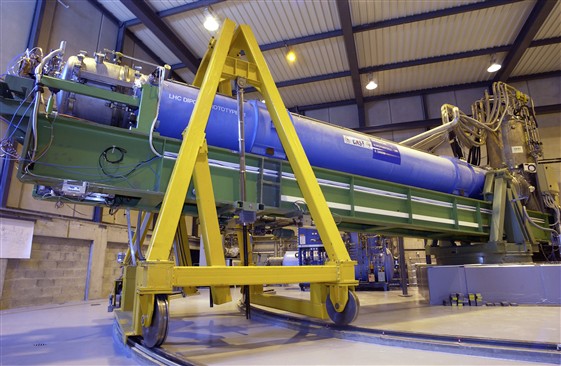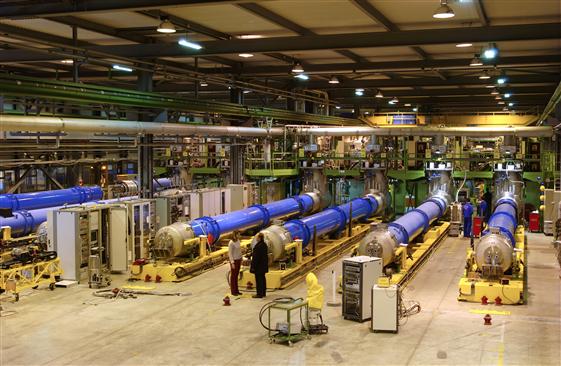This way for the new CERN visits!
As the LHC start-up draws near, visits to the underground experiments by members of the public are no longer possible. Still, that doesn’t mean that there will be no more CERN visits. Far from it! Three new itineraries for visits to the above-ground facilities are already available to visitors.
Up until mid-May, hard hats and sensible shoes were de rigueur as visitors filed into the caverns housing the LHC experiments. For many visitors, it was the highlight of their day. But as the LHC start-up draws near, visits to the underground experiments by members of the public have come to an end.
Nevertheless, public interest in CERN and the work done here hasn’t dried up. On the contrary! The range of visits on offer is being expanded around the above-ground facilities to maintain public interest. That is the new challenge that the Visits Service has set itself: to help the public explore other aspects of the Laboratory, especially the wide range of technologies that it employs.
CAST: How a magnet became a telescope. Hunting axions from the sun. Visitors to the CAST experiments will see, among other things, how a prototype dipole magnet built for the LHC has been turned into an unusual telescope that tracks the sun in search of the ‘axion’ particle postulated by theory.
In May, more than 60 guides were trained for the new range of visits. In June, three new sites are being opened to the public. Exceptionally, these sites were opened to the public during the recent Open Days, providing visitors with an opportunity for exploration and dialogue. Preparations are now under way to open up other sites to the public.
SM18: Super-cool magnets. This strategic building, where thousands of superconducting magnets for the LHC were assembled in their cryostats and tested, lets visitors into the secret world of magnet technology, radio frequency and cryogenics, where they can see how the magnets are built and understand why they are so crucial for the LHC. With a bit of luck, you may observe CERN technicians carrying out repairs on the actual magnets.
TERA: A walk against cancer – with a difference. Walk over to the laboratory of Professor Ugo Amaldi (Building 182) and see how the research conducted by CERN and the technologies it employs can have an impact on our life through medical applications of particle physics. Thanks to proton therapy and the use of proton beams that can destroy certain tumours, the fight against cancer is making progress.






